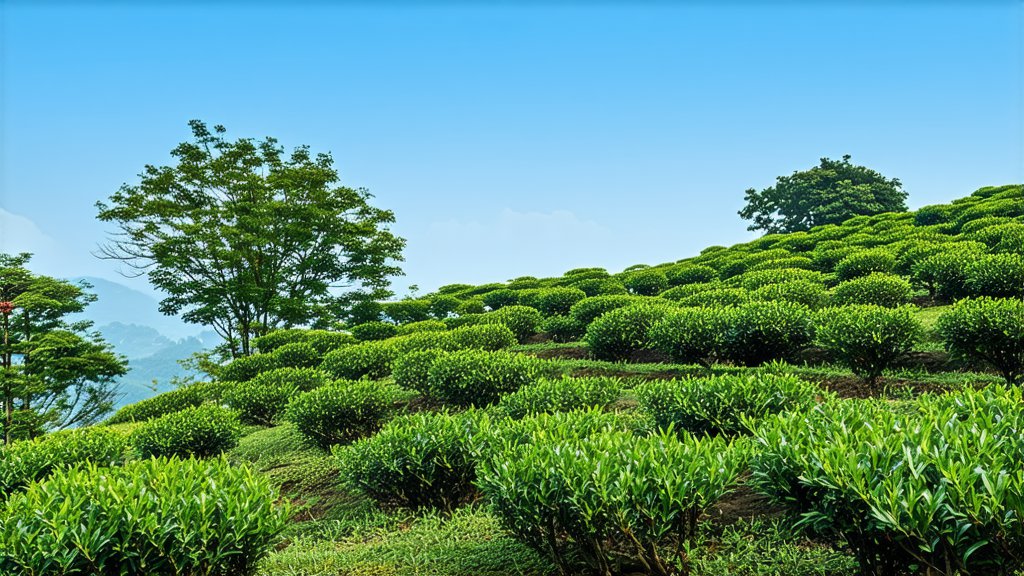
In the vast and diverse landscape of Chinese tea culture, few varieties capture the essence and elegance of the art as profoundly as Tieguanyin, a distinguished member of the Oolong tea family. With its roots deeply embedded in the rich soil of Anxi County in Fujian Province, Tieguanyin is not just a beverage; it is a testament to centuries of tradition, meticulous craftsmanship, and an unparalleled sensory experience that transcends borders and cultures.
Historical Legacy
The story of Tieguanyin dates back to the early 18th century during the Qing Dynasty, making it one of the oldest and most revered Oolong teas in China. Legend has it that the tea was discovered by a poor scholar named Wang who stumbled upon a wild tea tree growing beside a temple. Intrigued by its unique qualities, he propagated cuttings from this tree, which eventually led to the cultivation of what we now know as Tieguanyin. Its name, meaning "Iron Buddha," reflects both its origin near a Buddhist temple and the resilience of the tea plant itself.
Varieties and Characteristics
Tieguanyin is renowned for its distinctive flavor profile, combining floral notes with creamy textures and a subtle sweetness. There are primarily two types: traditional (also known as Anxi or authentic) and roasted. The traditional version undergoes minimal processing, highlighting the natural fragrance reminiscent of orchids and magnolias. On the other hand, the roasted variant is subjected to a charcoal roasting process, which imparts a toasty warmth and deepens the complexity of flavors.
Crafting the Perfect Cup
The journey from leaf to cup is an intricate dance of nature and human skill. The first step involves careful harvesting, typically done in spring when the leaves are at their freshest. Following this, the leaves undergo a series of precise steps: withering, tossing, oxidation, fixation, rolling, and drying. Each stage requires expert knowledge and finesse control to ensure the optimal balance between oxidation and preservation of the tea's natural essence.
One unique aspect of Tieguanyin production is the 'green within, red on the outside' technique, whereby the leaves are rolled into tight balls, allowing the edges to oxidize more than the centers. This creates a beautiful contrast in color and enhances the tea's complexity.
The Art of Appreciation: Gongfu Tea Ceremony
To truly appreciate Tieguanyin, one must engage in the ancient practice of the Gongfu tea ceremony. This ritualistic preparation method emphasizes mindfulness and respect for the tea, transforming the act of drinking into a meditative experience. Using a small clay teapot and cups, hot water is poured over the tightly packed leaves, releasing their full spectrum of flavors and aromas. The first brew is often discarded to cleanse the leaves, while subsequent infusions reveal layers of taste and aroma, each more nuanced than the last.
Sensory Exploration
When tasting Tieguanyin, pay attention to its multifaceted character. Start with the aroma—a harmonious blend of floral, fruity, and sometimes even mineral scents. As you sip, notice the initial sweetness that gradually gives way to a lingering bitterness, followed by a refreshing aftertaste that seems to echo in your mouth long after the tea is gone. The texture is another hallmark; with a silky smoothness that glides effortlessly across the palate.
Conclusion
Tieguanyin stands as a shining example of China's tea heritage, embodying the perfect union of nature's bounty and human ingenuity. From its storied past to its meticulous production process and the ceremonial appreciation through Gongfu, every aspect of Tieguanyin invites exploration and contemplation. Whether you're a seasoned tea connoisseur or a curious newcomer, embarking on a journey with Tieguanyin promises a profound connection to the timeless traditions and flavors that define Chinese tea culture.
In conclusion, let us savor not just the tea but also the stories and traditions that have been passed down through generations, enriching our understanding and appreciation of this extraordinary elixir.